 Search by Keyword
Sign Up Below for our MONTHLY BEATLES TRIVIA QUIZ!
|
“FIXING A HOLE”
(John Lennon – Paul McCartney)
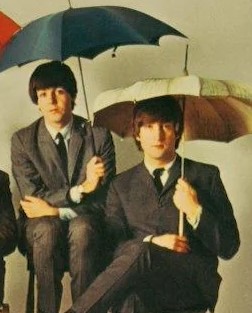 As we examine the later Beatles catalog, we can’t help but notice the stark differences in lyric writing as compared to their earlier work. Whether this was due to dissatisfaction with sticking to the approved pop formula of the day, their recent spiritual awakenings, or simply the mind-expanding hallucinogens they were ingesting (or all of the above), they nonetheless developed a "no holds barred" attitude to expressing themselves in their lyrics. As we examine the later Beatles catalog, we can’t help but notice the stark differences in lyric writing as compared to their earlier work. Whether this was due to dissatisfaction with sticking to the approved pop formula of the day, their recent spiritual awakenings, or simply the mind-expanding hallucinogens they were ingesting (or all of the above), they nonetheless developed a "no holds barred" attitude to expressing themselves in their lyrics.
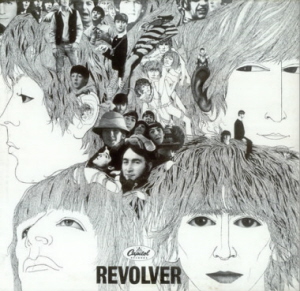 Lennon appeared to be the first to totally discard the “I Want To Hold Your Hand” mentality, constructing his lyrical storylines on whatever suited his fancy – anything but romantic relationships. George Harrison was also quick to follow suit, focusing primarily on higher consciousness-attaining subject matter. Paul, as evident on their 1966 album “Revolver,” showed himself to be the last holdout for writing songs about the standard topic of young love. As tantalizing as “Here, There And Everywhere” and “Good Day Sunshine” are, he didn’t stray too far from the "romance" formula. While he did admit that “Got To Get You Into My Life” was indeed about marijuana, he still disguised the subject matter under the premise of a romantic relationship. Lennon appeared to be the first to totally discard the “I Want To Hold Your Hand” mentality, constructing his lyrical storylines on whatever suited his fancy – anything but romantic relationships. George Harrison was also quick to follow suit, focusing primarily on higher consciousness-attaining subject matter. Paul, as evident on their 1966 album “Revolver,” showed himself to be the last holdout for writing songs about the standard topic of young love. As tantalizing as “Here, There And Everywhere” and “Good Day Sunshine” are, he didn’t stray too far from the "romance" formula. While he did admit that “Got To Get You Into My Life” was indeed about marijuana, he still disguised the subject matter under the premise of a romantic relationship.
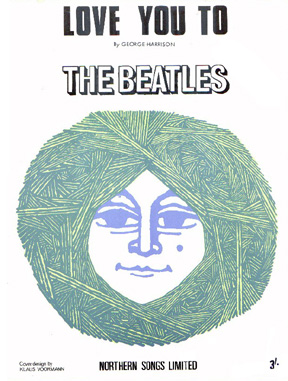 Finally, under the “Sgt. Pepper” formula, he threw off these shackles (at least temporarily) for his eccentric “Fixing A Hole.” Like John Lennon’s “Tomorrow Never Knows” and George Harrison’s “Love You To” from the previous year, listeners were now also scratching their heads about this Paul McCartney track. What could this song mean? Could it mean what we think it means? Or is it as Paul sings in the song: “It really doesn’t matter”? Finally, under the “Sgt. Pepper” formula, he threw off these shackles (at least temporarily) for his eccentric “Fixing A Hole.” Like John Lennon’s “Tomorrow Never Knows” and George Harrison’s “Love You To” from the previous year, listeners were now also scratching their heads about this Paul McCartney track. What could this song mean? Could it mean what we think it means? Or is it as Paul sings in the song: “It really doesn’t matter”?
Songwriting History
 The rumor mill at the time of the release of “Sgt. Pepper” and thereafter made the easy assumption that “Fixing A Hole” was about heroin. After all, with phrases like “I get high” and “I’d love to turn you on” peppered through the album, as well as the supposed de-coding of the title “Lucy In The Sky With Diamonds” to stand for LSD, it was not a far jump to say this song concerned getting a “fix” by shooting up heroin. "Some people take 'Fixing A Hole" to be about heroin," Paul explains in his 2021 book "The Lyrics," continuing, "That's most likely because they're visualizing needle holes. At the point the song was written, the drug was more likely than not to be marijuana." Also, not to confuse the specific drug intake of the group, Paul had admited around this time to have taken LSD, which could possibly explain why their music had become so “weird” at the time, as many listeners and reviewers expressed. The rumor mill at the time of the release of “Sgt. Pepper” and thereafter made the easy assumption that “Fixing A Hole” was about heroin. After all, with phrases like “I get high” and “I’d love to turn you on” peppered through the album, as well as the supposed de-coding of the title “Lucy In The Sky With Diamonds” to stand for LSD, it was not a far jump to say this song concerned getting a “fix” by shooting up heroin. "Some people take 'Fixing A Hole" to be about heroin," Paul explains in his 2021 book "The Lyrics," continuing, "That's most likely because they're visualizing needle holes. At the point the song was written, the drug was more likely than not to be marijuana." Also, not to confuse the specific drug intake of the group, Paul had admited around this time to have taken LSD, which could possibly explain why their music had become so “weird” at the time, as many listeners and reviewers expressed.
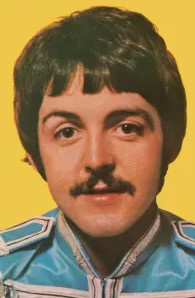 When asked in 1967 in an interview with artist Alan Aldridge about the drug associations circulating about “Fixing A Hole,” McCartney quickly dismissed it. “If you’re a junky sitting in a room and fixing a hole then that’s what it will mean to you, but when I wrote it I meant if there’s a crack, or the room is uncolorful, then I’ll paint it.” Another quote has Paul stating that it was “about the hole in the road where the rain gets in; a good old analogy.” When asked in 1967 in an interview with artist Alan Aldridge about the drug associations circulating about “Fixing A Hole,” McCartney quickly dismissed it. “If you’re a junky sitting in a room and fixing a hole then that’s what it will mean to you, but when I wrote it I meant if there’s a crack, or the room is uncolorful, then I’ll paint it.” Another quote has Paul stating that it was “about the hole in the road where the rain gets in; a good old analogy.”
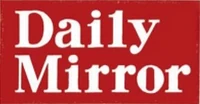 He continued to avoid any drug connections by focusing on specific lines in the song, as we see here in yet another 1967 quote: “It’s about the hole in your make-up which lets the rain in and stops your mind going where it will. The ‘silly people who run around, they worry me, and never ask why they don’t get in my door.’ These were the fans that constantly besieged my home, often camping outside on the pavement for days…If they only knew the best way to get in is not to do that, because obviously anyone who is going to be straight and be like a real friend is going to get in...but they simply stand there and give off the impression, 'Dont let us in.' I actually do enjoy having them in. I used to do it more, but I don't as much now because I invited one in once and the next day she was in The Daily Mirror with her mother saying we were going to get married." He continued to avoid any drug connections by focusing on specific lines in the song, as we see here in yet another 1967 quote: “It’s about the hole in your make-up which lets the rain in and stops your mind going where it will. The ‘silly people who run around, they worry me, and never ask why they don’t get in my door.’ These were the fans that constantly besieged my home, often camping outside on the pavement for days…If they only knew the best way to get in is not to do that, because obviously anyone who is going to be straight and be like a real friend is going to get in...but they simply stand there and give off the impression, 'Dont let us in.' I actually do enjoy having them in. I used to do it more, but I don't as much now because I invited one in once and the next day she was in The Daily Mirror with her mother saying we were going to get married."
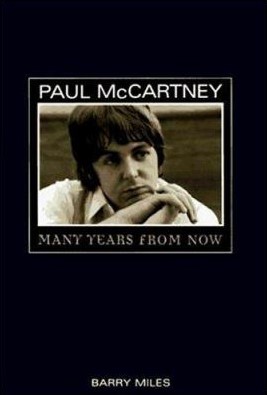 An admission, of sorts, did finally surface within Paul’s 1997 book “Many Years From Now.” Co-author Barry Miles has this to say about the composition: “Another inaccurate but frequently told story is that ‘Fixing A Hole’ was about heroin. This track is actually about marijuana. Like ‘Got To Get You Into My Life,’ it is described by Paul as ‘another ode to pot,’ the drug that got him out of the rut of everyday consciousness and gave him the freedom to explore.” An admission, of sorts, did finally surface within Paul’s 1997 book “Many Years From Now.” Co-author Barry Miles has this to say about the composition: “Another inaccurate but frequently told story is that ‘Fixing A Hole’ was about heroin. This track is actually about marijuana. Like ‘Got To Get You Into My Life,’ it is described by Paul as ‘another ode to pot,’ the drug that got him out of the rut of everyday consciousness and gave him the freedom to explore.”
McCartney himself then relates: “’Fixing later became associated with fixing heroin but at that time I didn’t associate it really. I know a lot of heroin people thought that was what it meant because that’s exactly what you do, fix in a hole. It’s not my meaning at all.”
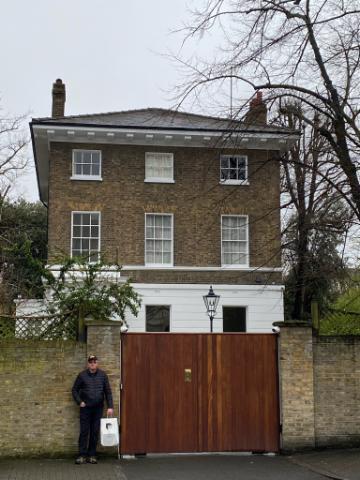 "‘Fixing A Hole’ was about all those pissy people who told you, ‘Don’t daydream, don’t do this and don’t do that.’ It seemed to me that that was all wrong and that it was now time to fix all of that. Mending was my meaning. Wanting to be free enough to let my mind wander, let myself be artistic, let myself not sneer at avant-garde things. It was the idea of me being on my own now, able to do what I want. If I want I’ll paint the room in a colorful way. I’m fixing the hole, I’m fixing the crack in the door and I won’t allow that to happen anymore, I’ll take hold of my life a bit more. It’s all okay, I can do what I want and I’m going to set about fixing things. I was living now pretty much on my own in Cavendish Avenue, and enjoying my freedom and my new house and the salon-ness of it all." In his 2021 book "The Lyrics," Paul confirms, "As it happens, I was living pretty much on my own in London and enjoying my new house. So the whole world of home improvements was beginning to impinge on me in a quite literal way." "‘Fixing A Hole’ was about all those pissy people who told you, ‘Don’t daydream, don’t do this and don’t do that.’ It seemed to me that that was all wrong and that it was now time to fix all of that. Mending was my meaning. Wanting to be free enough to let my mind wander, let myself be artistic, let myself not sneer at avant-garde things. It was the idea of me being on my own now, able to do what I want. If I want I’ll paint the room in a colorful way. I’m fixing the hole, I’m fixing the crack in the door and I won’t allow that to happen anymore, I’ll take hold of my life a bit more. It’s all okay, I can do what I want and I’m going to set about fixing things. I was living now pretty much on my own in Cavendish Avenue, and enjoying my freedom and my new house and the salon-ness of it all." In his 2021 book "The Lyrics," Paul confirms, "As it happens, I was living pretty much on my own in London and enjoying my new house. So the whole world of home improvements was beginning to impinge on me in a quite literal way."
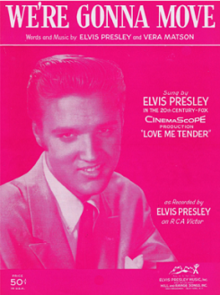 One other very possible inspiration lyrically for this song, although never confirmed, can be found in the 1956 Elvis Presley release “We’re Gonna Move,” which contains the words “Well, there’s a hole in the roof where the rains pours in.” Being the huge Elvis fans that The Beatles were, these lyrics are too close to those in “Fixing A Hole” to not have been thought of, at least subconsciously. One other very possible inspiration lyrically for this song, although never confirmed, can be found in the 1956 Elvis Presley release “We’re Gonna Move,” which contains the words “Well, there’s a hole in the roof where the rains pours in.” Being the huge Elvis fans that The Beatles were, these lyrics are too close to those in “Fixing A Hole” to not have been thought of, at least subconsciously.
Many writers have come to believe that the “fixing” that was being referred to in the song had to do with Paul’s farmhouse named High Park, this being near Campbeltown on the west coast of Scotland, which he purchased sight unseen in June of 1966. Aside from needing to mend a hole in the roof “where the rain gets in,” his drab brown walls needed to be painted “in a colorful way.” Alistair Taylor, Brian Epstein’s assistant, had even given vivid details about him, Paul and girlfriend Jane Asher spending hours in the house decorating the inside walls with “colored pens” to “relieve the gloom,” insinuating that this inspired some of this song's lyrics.
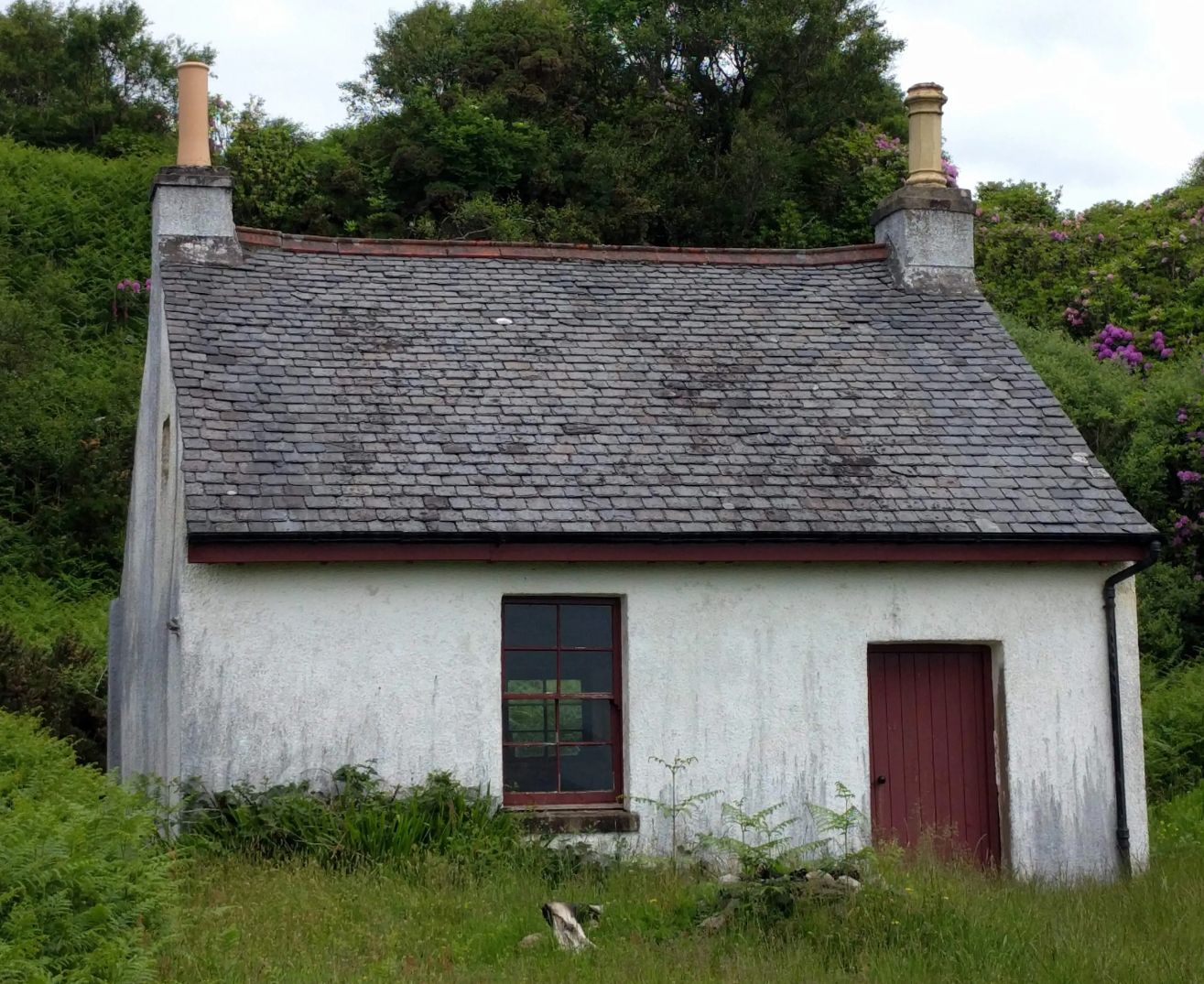 As detailed in the 1997 biography “Many Years From Now,” Paul relates: “It was much later that I ever got round to fixing the roof on the Scottish farm, I never did any of that till I met Linda. People just make it up! They know I’ve got a farm, they know it has a roof, they know I might be given to handyman tendencies so it’s a very small leap for mankind…to make up the rest of the story." As detailed in the 1997 biography “Many Years From Now,” Paul relates: “It was much later that I ever got round to fixing the roof on the Scottish farm, I never did any of that till I met Linda. People just make it up! They know I’ve got a farm, they know it has a roof, they know I might be given to handyman tendencies so it’s a very small leap for mankind…to make up the rest of the story."
 A very noteworthy admission concerning the writing of "Fixing A Hole" came in Paul's 2021 book "The Lyrics." "Before I write a song, there's a black hole and then I get my guitar or piano and fill it in. The notion that there is a gap to fill is no less honorable a basis for a song's inspiration than a bolt of lightning coming down out of the sky. One way or another, it's a miracle. I sit down and there's a blackness. There's nothing in this hole. Maybe I start conjuring and at the end of three hours I have a rabbit to pull out of what had looked like a hole but was actually a top hat. Or, at the end of the session there's not a black hole anymore but a colored landscape." A very noteworthy admission concerning the writing of "Fixing A Hole" came in Paul's 2021 book "The Lyrics." "Before I write a song, there's a black hole and then I get my guitar or piano and fill it in. The notion that there is a gap to fill is no less honorable a basis for a song's inspiration than a bolt of lightning coming down out of the sky. One way or another, it's a miracle. I sit down and there's a blackness. There's nothing in this hole. Maybe I start conjuring and at the end of three hours I have a rabbit to pull out of what had looked like a hole but was actually a top hat. Or, at the end of the session there's not a black hole anymore but a colored landscape."
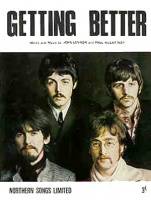 "On the subject of colored landscapes, I was the last in the group to take LSD. John and George had urged me to do it so that I could be on the same level as them. I was very reluctant because I'm actually quite straitlaced, and I'd heard that if you took LSD you would never be the same again. I wasn't sure that I wanted that. I wasn't sure that was such a terrific idea. So I was very resistant. In the end I did give in and take LSD one night with John (quite possibly the evening of March 21st, 1967 after John's LSD experience during the recording of the song "Getting Better." "On the subject of colored landscapes, I was the last in the group to take LSD. John and George had urged me to do it so that I could be on the same level as them. I was very reluctant because I'm actually quite straitlaced, and I'd heard that if you took LSD you would never be the same again. I wasn't sure that I wanted that. I wasn't sure that was such a terrific idea. So I was very resistant. In the end I did give in and take LSD one night with John (quite possibly the evening of March 21st, 1967 after John's LSD experience during the recording of the song "Getting Better."
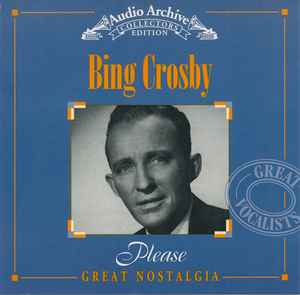 "Around that time, whenever I closed my eyes, instead of there being blackness there was a little blue hole. It was as if something needed patching. I always had the feeling that if I could go up to it and look through, there would be an answer. Now, I could go on about how the wordplay in Bing Crosby's song 'Please' - 'Oh, Please / Lend your little ear to my pleas' - might be informing the wordplay in 'And it really doesn't matter if I'm wrong I'm right / Where I belong.' The fact is that the most important influence here was not even the metaphysical idea of a hole, which I mentioned earlier, but this absolutely physical phenomenon - something that first appeared after I took acid. I still see it occasionally, and I know exactly what it is. I know exactly what size it is." As insinuated here, it appears that the Bing Crosby song "Please" inspired both "Please Please Me" and "Fixing A Hole." "Around that time, whenever I closed my eyes, instead of there being blackness there was a little blue hole. It was as if something needed patching. I always had the feeling that if I could go up to it and look through, there would be an answer. Now, I could go on about how the wordplay in Bing Crosby's song 'Please' - 'Oh, Please / Lend your little ear to my pleas' - might be informing the wordplay in 'And it really doesn't matter if I'm wrong I'm right / Where I belong.' The fact is that the most important influence here was not even the metaphysical idea of a hole, which I mentioned earlier, but this absolutely physical phenomenon - something that first appeared after I took acid. I still see it occasionally, and I know exactly what it is. I know exactly what size it is." As insinuated here, it appears that the Bing Crosby song "Please" inspired both "Please Please Me" and "Fixing A Hole."
As for John’s involvement in writing this ‘Lennon / McCartney’ composition, there appears to have been none. “That’s Paul, again writing a good lyric,” John himself remarked in 1980. “It’s pretty much my song, as I recall,” Paul himself stated.
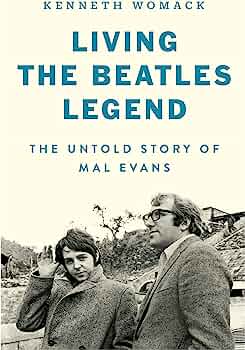 However, this apparently isn’t the end of this story. In the diary of roadie and friend Mal Evans, this entry is found for the day January 27th, 1967: “Started writing song with Paul upstairs in his room, he on piano…Did a lot more of ‘when the rain comes in.’” On January 29th, 1967, Mal Evans' diary contains his recollection of Paul and him putting the finishing touches on "Door," which apparently was one of the earlier working titles for "Fixing A Hole," along with "Where The Rain Gets In." According to Kenneth Womack's 2023 book entitled "Living The Beatles Legend: The Untold Story Of Mal Evans," "the composition found its roots, at least initially, in Paul's first brush with homeownership, with Mal having discovered a leak in the ceiling of (Paul's third story) music room. The next day, according to Mal, the two contined refining the tune - 'Hope people like it,' he wrote in his diary." These diary entries concerning his co-writing “Fixing A Hole” with Paul appears to be valid as substantiated by a taped interview Mal Evans made shortly before his death in 1976. There he staed: “I stayed with (Paul) for four months and he had a music room at the top of his house with his multi-colored piano and we were up there a lot of the time. We wrote ‘Sgt. Pepper’ and also another song on the album, ‘Fixing A Hole.’" However, this apparently isn’t the end of this story. In the diary of roadie and friend Mal Evans, this entry is found for the day January 27th, 1967: “Started writing song with Paul upstairs in his room, he on piano…Did a lot more of ‘when the rain comes in.’” On January 29th, 1967, Mal Evans' diary contains his recollection of Paul and him putting the finishing touches on "Door," which apparently was one of the earlier working titles for "Fixing A Hole," along with "Where The Rain Gets In." According to Kenneth Womack's 2023 book entitled "Living The Beatles Legend: The Untold Story Of Mal Evans," "the composition found its roots, at least initially, in Paul's first brush with homeownership, with Mal having discovered a leak in the ceiling of (Paul's third story) music room. The next day, according to Mal, the two contined refining the tune - 'Hope people like it,' he wrote in his diary." These diary entries concerning his co-writing “Fixing A Hole” with Paul appears to be valid as substantiated by a taped interview Mal Evans made shortly before his death in 1976. There he staed: “I stayed with (Paul) for four months and he had a music room at the top of his house with his multi-colored piano and we were up there a lot of the time. We wrote ‘Sgt. Pepper’ and also another song on the album, ‘Fixing A Hole.’"
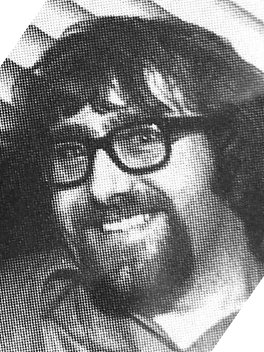 "When the album came out, I remember it very clearly, we were driving somewhere late at night," Mal Evans continued,"Paul turned round to me and said, ‘Look Mal, do you mind if we don’t put your name on the songs? You’ll get your royalties and all that, because Lennon and McCartney are the biggest thing in our lives. We are really a hot item and we don’t want to make it ‘Lennon / McCartney / Evans. So, would you mind?’ I didn’t mind, because I was so in love with the group that it didn’t matter to me. I knew myself what had happened...Unfortunately for me, I was to receive no credit, and as it turned out, no royalties." "When the album came out, I remember it very clearly, we were driving somewhere late at night," Mal Evans continued,"Paul turned round to me and said, ‘Look Mal, do you mind if we don’t put your name on the songs? You’ll get your royalties and all that, because Lennon and McCartney are the biggest thing in our lives. We are really a hot item and we don’t want to make it ‘Lennon / McCartney / Evans. So, would you mind?’ I didn’t mind, because I was so in love with the group that it didn’t matter to me. I knew myself what had happened...Unfortunately for me, I was to receive no credit, and as it turned out, no royalties."
 Regent Sound Studio, London
|
Recording History
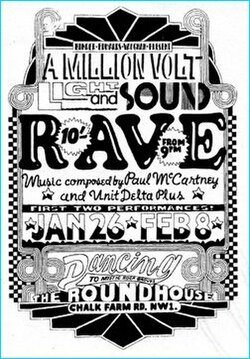 On January 5th, 1967, The Beatles commensed, upon McCartney's suggestion, to record what became a near 14 minute track intended for an event to be held at the Roundhouse Theater in London on January 28th through February 4th, 1967, this being referred to as "Carnival Of Light" throughout the years. Mark Lewisohn's book "The Beatles Recording Sessions" stipulates the details of this recording as "the longest uninterupted Beatles recording to date" with mulitple overdubs. He details: "Track one of the tape was full of distorted, hypnotic drum and organ sounds; track two had a distorted lead guitar; track three had the sounds of a church organ, various effects (the gargling with water was one) and voices; track four featured various indescribable sound effects with heaps of tape echo and manic tambourine." Somewhere in this menagerie was reportedly an early display of Paul's composition "Fixing A Hole," which the author instructed the coordinator of the event to fade down when the recording weas being played (which they undoubtedly didn't). On January 5th, 1967, The Beatles commensed, upon McCartney's suggestion, to record what became a near 14 minute track intended for an event to be held at the Roundhouse Theater in London on January 28th through February 4th, 1967, this being referred to as "Carnival Of Light" throughout the years. Mark Lewisohn's book "The Beatles Recording Sessions" stipulates the details of this recording as "the longest uninterupted Beatles recording to date" with mulitple overdubs. He details: "Track one of the tape was full of distorted, hypnotic drum and organ sounds; track two had a distorted lead guitar; track three had the sounds of a church organ, various effects (the gargling with water was one) and voices; track four featured various indescribable sound effects with heaps of tape echo and manic tambourine." Somewhere in this menagerie was reportedly an early display of Paul's composition "Fixing A Hole," which the author instructed the coordinator of the event to fade down when the recording weas being played (which they undoubtedly didn't).
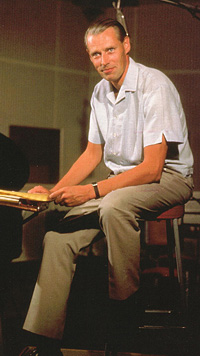 On February 9th, 1967, about two weeks after it was finished being composied (according to Mal Evans’ January 27th diary entry), the group entered the studio to work on the song. However, it was not at their usual EMI Studios that the rhythm track for “Fixing A Hole” was recorded. “I’m afraid the boys didn’t plan very much,” recounted producer George Martin, “and when they wanted to come into a studio they never said to me, ‘keep the next two weeks freed up because we’re sure we’re going to be needing a studio.’ They would ring me up at 10 in the morning and say, ‘We want to record tonight at 7 o’clock, OK?’ And I had to find a damned studio.” On February 9th, 1967, about two weeks after it was finished being composied (according to Mal Evans’ January 27th diary entry), the group entered the studio to work on the song. However, it was not at their usual EMI Studios that the rhythm track for “Fixing A Hole” was recorded. “I’m afraid the boys didn’t plan very much,” recounted producer George Martin, “and when they wanted to come into a studio they never said to me, ‘keep the next two weeks freed up because we’re sure we’re going to be needing a studio.’ They would ring me up at 10 in the morning and say, ‘We want to record tonight at 7 o’clock, OK?’ And I had to find a damned studio.”
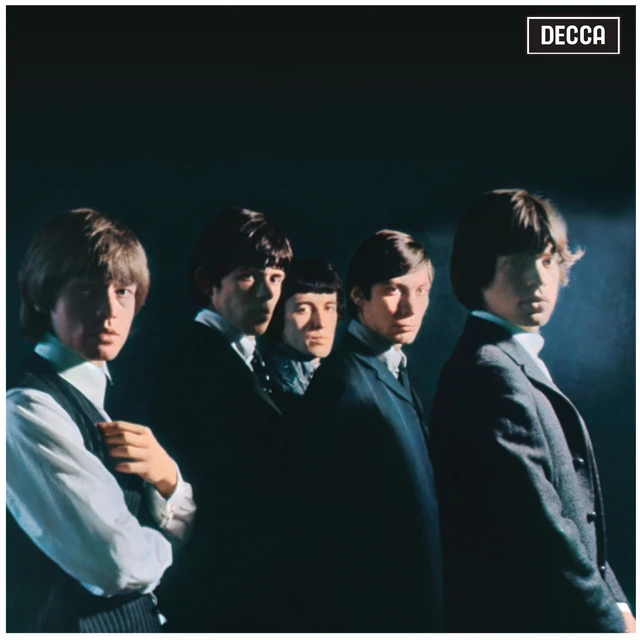 The “damned studio” that George Martin found was Regent Sound Studio in London, where some of the early Rolling Stones' hits were recorded, as well as other popular artists' releases. “Regent Sound was a pretty awful little studio, very cramped and boxy,” relates George Martin. Engineer Geoff Emerick, in his book “Here, There And Everywhere,” recalls his frustration at not being able to attend this session: “Ridiculously, even though we’d recorded almost every note on the album up to that point, Richard (Lush) and I couldn’t go there because we were EMI employees. George Martin, on the other hand, could attend, because he was working as an independent contractor.” This procedure changed in later years, allowing recording staff to complete a project no matter what studio was used on a given day. But as it was on this day, Adrian Ibbetson was used as a replacement for Geoff Emerick. The exact hours The Beatles were in Regent Sound on this day are not known but, if recent habits dictate, the session probably began around 7 pm and lasted until early morning the next day. The “damned studio” that George Martin found was Regent Sound Studio in London, where some of the early Rolling Stones' hits were recorded, as well as other popular artists' releases. “Regent Sound was a pretty awful little studio, very cramped and boxy,” relates George Martin. Engineer Geoff Emerick, in his book “Here, There And Everywhere,” recalls his frustration at not being able to attend this session: “Ridiculously, even though we’d recorded almost every note on the album up to that point, Richard (Lush) and I couldn’t go there because we were EMI employees. George Martin, on the other hand, could attend, because he was working as an independent contractor.” This procedure changed in later years, allowing recording staff to complete a project no matter what studio was used on a given day. But as it was on this day, Adrian Ibbetson was used as a replacement for Geoff Emerick. The exact hours The Beatles were in Regent Sound on this day are not known but, if recent habits dictate, the session probably began around 7 pm and lasted until early morning the next day.
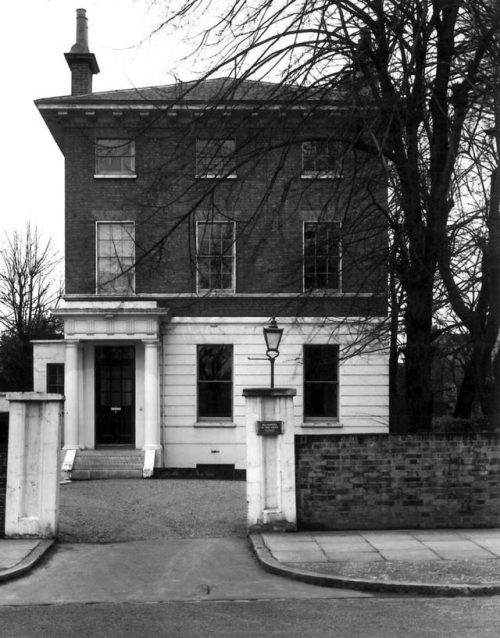 There is one other person known to have been present on this day. Paul relates: “The funny thing about that was the night when we were going to record it, at Regent Sound Studios at Tottenham Court Road, I brought a guy who was Jesus. A guy arrived at my front gate and I answered, ‘Yes? Hello’ because I always used to answer the gate for everyone. If they were boring I would say, ‘Sorry, no,’ and they generally went away. This guy said, ‘I’m Jesus Christ.’ So I said, ‘Oop,’ slightly shocked. I said, ‘Well, you’d better come in then.’ I thought, Well, it probably isn’t. But if he is, I’m not going to be the one to turn him away. So I gave him a cup of tea and we just chatted and I asked, ‘Why do you think you are Jesus?’ There were a lot of casualties about then. We used to get a lot of people who were maybe insecure or going through emotional breakdowns or whatever.” There is one other person known to have been present on this day. Paul relates: “The funny thing about that was the night when we were going to record it, at Regent Sound Studios at Tottenham Court Road, I brought a guy who was Jesus. A guy arrived at my front gate and I answered, ‘Yes? Hello’ because I always used to answer the gate for everyone. If they were boring I would say, ‘Sorry, no,’ and they generally went away. This guy said, ‘I’m Jesus Christ.’ So I said, ‘Oop,’ slightly shocked. I said, ‘Well, you’d better come in then.’ I thought, Well, it probably isn’t. But if he is, I’m not going to be the one to turn him away. So I gave him a cup of tea and we just chatted and I asked, ‘Why do you think you are Jesus?’ There were a lot of casualties about then. We used to get a lot of people who were maybe insecure or going through emotional breakdowns or whatever.”
 “So I told him, ‘I’ve got to go to a session but if you promise to be very quiet and just sit in a corner, you can come.’ So he did, he came to the session and he did sit very quietly and I never saw him after that. I introduced him to the guys. They said, ‘Who’s this?’ I answered, ‘He’s Jesus Christ.’ We had a bit of a giggle over that…But that was it. Last we ever saw of Jesus!” “So I told him, ‘I’ve got to go to a session but if you promise to be very quiet and just sit in a corner, you can come.’ So he did, he came to the session and he did sit very quietly and I never saw him after that. I introduced him to the guys. They said, ‘Who’s this?’ I answered, ‘He’s Jesus Christ.’ We had a bit of a giggle over that…But that was it. Last we ever saw of Jesus!”
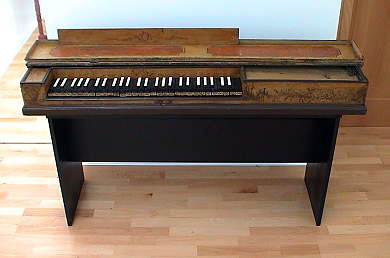 With Jesus Christ in the corner, The Beatles began their studio time at this session with extensive rehearsals led by Paul, at least six unofficial takes being recorded before the band had the arrangement of the new song all ironed out. “Paul knew exactly where he was going with 'Fixing A Hole,'" recounted George Martin in his 1994 book “Summer Of Love.” He adds: “As a result, it was one of the fastest tracks we recorded, in an album of 13 songs that took some five months to complete...It's a very simply constructed song. It was built around a harpsichord and a bass guitar. Even before we got into the studio Paul had decided to use a harpsichord as the mainstay of his rhythm; even so, the bass line is more important than the harpsichord line.” With Jesus Christ in the corner, The Beatles began their studio time at this session with extensive rehearsals led by Paul, at least six unofficial takes being recorded before the band had the arrangement of the new song all ironed out. “Paul knew exactly where he was going with 'Fixing A Hole,'" recounted George Martin in his 1994 book “Summer Of Love.” He adds: “As a result, it was one of the fastest tracks we recorded, in an album of 13 songs that took some five months to complete...It's a very simply constructed song. It was built around a harpsichord and a bass guitar. Even before we got into the studio Paul had decided to use a harpsichord as the mainstay of his rhythm; even so, the bass line is more important than the harpsichord line.”
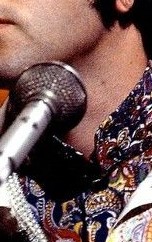 Once everyone’s parts were learned, the group taped two official takes of the rhythm track of the song. Unusually, they reverted back to the recording technique of the early Beatles sessions by recording the lead vocal live right along with the rhythm track. Common practice for the past year had them overdubbing both the lead vocal and bass guitar, as well as various other elements, afterward in order to "fine tune" these performances. Possibly because of the cramped and unfamiliar setting of Regent Sound Studios, they reverted back to basics for “Fixing A Hole.” Once everyone’s parts were learned, the group taped two official takes of the rhythm track of the song. Unusually, they reverted back to the recording technique of the early Beatles sessions by recording the lead vocal live right along with the rhythm track. Common practice for the past year had them overdubbing both the lead vocal and bass guitar, as well as various other elements, afterward in order to "fine tune" these performances. Possibly because of the cramped and unfamiliar setting of Regent Sound Studios, they reverted back to basics for “Fixing A Hole.”
 Even though Geoff Emerick couldn’t be there, he was impressed by the performance nonetheless. He remembered: “We listened to the tapes a few days later, and while they were a bit disappointing sonically, I was impressed with the vibe: all four Beatles played together on the backing track, just like in the old days.” Even though Geoff Emerick couldn’t be there, he was impressed by the performance nonetheless. He remembered: “We listened to the tapes a few days later, and while they were a bit disappointing sonically, I was impressed with the vibe: all four Beatles played together on the backing track, just like in the old days.”
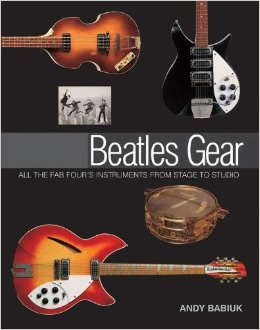 There has been some question through the years as to the identity of the players of the instruments. Of course, Ringo was on drums, but the other instruments heard on the rhythm track are harpsichord, bass guitar and also maracas. So, who played what? Beatles road manager Neil Aspinall, writing in the fan magazine “The Beatles Monthly,” claims to have witnessed Paul playing the distinctive harpsichord part. And, while EMI engineer Richard Lush wasn’t present on this day, he is quoted in Andy Babiuk’s book “Beatles Gear” as recalling: "I do remember that Lennon played the bass on that track. He used a Fender bass on it. If you play the album you can pick it out because it’s very simple, and a ploppy sort of sound. It didn’t sound as rich as Paul’s Rickenbacker bass." (According to Andy Babiuk's book "Beatles Gear," The Beatles did not have a Fender bass guitar in their possession until 1968. Therefore, the bass John could have used on this session was the right-handed Burns Nu-Sonic which was used by the band in 1966.) However, George Martin, in his book "Summer Of Love," insists that Paul relinquished the keyboard role on the song to him while Paul took up his usual instrument of bass guitar. There has been some question through the years as to the identity of the players of the instruments. Of course, Ringo was on drums, but the other instruments heard on the rhythm track are harpsichord, bass guitar and also maracas. So, who played what? Beatles road manager Neil Aspinall, writing in the fan magazine “The Beatles Monthly,” claims to have witnessed Paul playing the distinctive harpsichord part. And, while EMI engineer Richard Lush wasn’t present on this day, he is quoted in Andy Babiuk’s book “Beatles Gear” as recalling: "I do remember that Lennon played the bass on that track. He used a Fender bass on it. If you play the album you can pick it out because it’s very simple, and a ploppy sort of sound. It didn’t sound as rich as Paul’s Rickenbacker bass." (According to Andy Babiuk's book "Beatles Gear," The Beatles did not have a Fender bass guitar in their possession until 1968. Therefore, the bass John could have used on this session was the right-handed Burns Nu-Sonic which was used by the band in 1966.) However, George Martin, in his book "Summer Of Love," insists that Paul relinquished the keyboard role on the song to him while Paul took up his usual instrument of bass guitar.
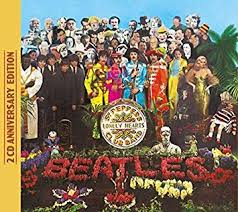 However, the 2017 50th Anniversary Edition of the "Sgt. Pepper" album settles this issue once and for all. It appears here that "take one" of the song, which was used for the finished product, was "bounced back to the four-track from another machine" to become "take two," as documented in the liner notes of the above mentioned release. "Take three," which is contained on this reissue as a bonus track, shows that the obvious musician playing the harpsichord on the song is Paul as Neil Aspinall remembered, him singing his lead vocal at the same time. Therefore we can conclude that Richard Lush was correct when he assumed John was on bass, this being reiterated by Kevin Howlett's liner notes for the "Sgt. Pepper" 50th Anniversary release in 2017. This, of course, would leave the maraca playing to George Harrison, his lead guitar work being added in later as an overdub. Mystery solved! However, the 2017 50th Anniversary Edition of the "Sgt. Pepper" album settles this issue once and for all. It appears here that "take one" of the song, which was used for the finished product, was "bounced back to the four-track from another machine" to become "take two," as documented in the liner notes of the above mentioned release. "Take three," which is contained on this reissue as a bonus track, shows that the obvious musician playing the harpsichord on the song is Paul as Neil Aspinall remembered, him singing his lead vocal at the same time. Therefore we can conclude that Richard Lush was correct when he assumed John was on bass, this being reiterated by Kevin Howlett's liner notes for the "Sgt. Pepper" 50th Anniversary release in 2017. This, of course, would leave the maraca playing to George Harrison, his lead guitar work being added in later as an overdub. Mystery solved!
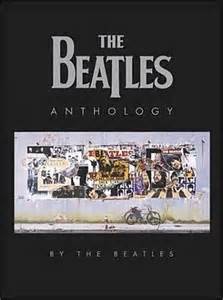 George Harrison gives his first hand account about the recording of this song as well as many others during this period as quoted in the 2000 "Beatles Anthology" book: "There came a time, possibly around the time of 'Sgt. Pepper' (which was maybe why I didn't enjoy that so much), where Paul had fixed an idea in his brain as to how to record one of his songs. He wasn't open to anybody else's suggestions. John was always so much more open when it came to how to record one of his songs. With Paul, it was taken to the most ridiculous situations, where I'd open my guitar case and go to get my guitar out and he'd say, 'No, no, we're not doing that yet. We're gonna do a piano track with Ringo, and then we'll do that later.' It got so that there was very little to do, other than sit around and hear Paul going, 'Fixing a hole...' with Ringo keeping the time. Then he'd overdub...whatever else." George Harrison gives his first hand account about the recording of this song as well as many others during this period as quoted in the 2000 "Beatles Anthology" book: "There came a time, possibly around the time of 'Sgt. Pepper' (which was maybe why I didn't enjoy that so much), where Paul had fixed an idea in his brain as to how to record one of his songs. He wasn't open to anybody else's suggestions. John was always so much more open when it came to how to record one of his songs. With Paul, it was taken to the most ridiculous situations, where I'd open my guitar case and go to get my guitar out and he'd say, 'No, no, we're not doing that yet. We're gonna do a piano track with Ringo, and then we'll do that later.' It got so that there was very little to do, other than sit around and hear Paul going, 'Fixing a hole...' with Ringo keeping the time. Then he'd overdub...whatever else."
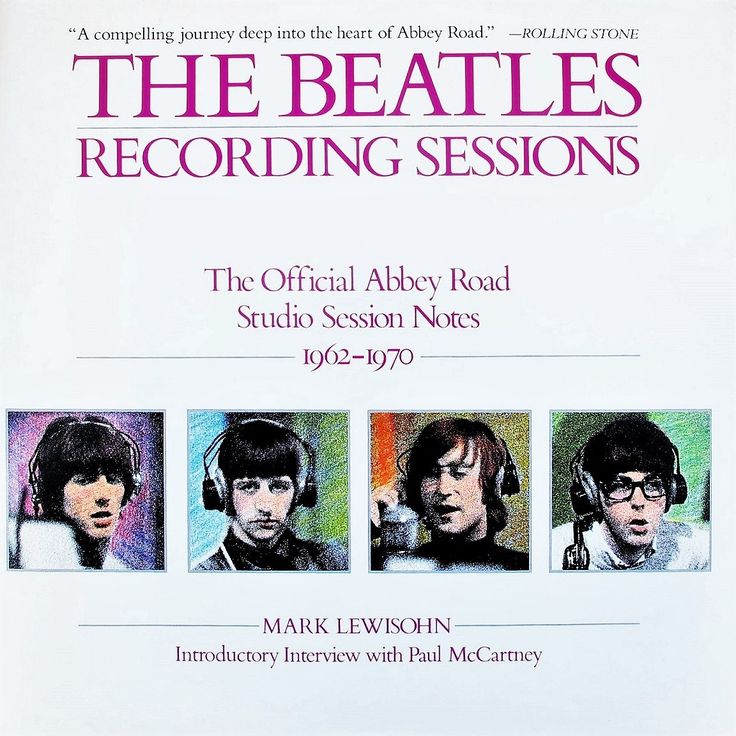 As detailed above, "take one" and "take two" were actually the same exact performance and "take three" was apparently another attempt just for good measure and was complete but was considered not as good as the previous attempt. In any event, as brought out in Mark Lewisohn’s book “The Beatles Recording Sessions,” "take two" was scribbled down as the ''final master." It was decided, at this point anyway, that some overdubs would be perforrmed onto what they here stipulated as "take two." As detailed above, "take one" and "take two" were actually the same exact performance and "take three" was apparently another attempt just for good measure and was complete but was considered not as good as the previous attempt. In any event, as brought out in Mark Lewisohn’s book “The Beatles Recording Sessions,” "take two" was scribbled down as the ''final master." It was decided, at this point anyway, that some overdubs would be perforrmed onto what they here stipulated as "take two."
 February 21st, 1967, was the second and last day needed for completing “Fixing A Hole.” They were back in EMI Studio Two once again with both engineers Geoff Emerick and Richard Lush back on the job, the session scheduled to begin at 7 pm. Their first thought was to combine "take three" that was recorded two weeks prior with a newly recorded version to be recorded on this day. There must have been something they liked on this "take three" after all. Therefore, the group recorded another take of the song (incorrectly labeling it "take one") with the intention of mixing it together with their previously recorded "take three." February 21st, 1967, was the second and last day needed for completing “Fixing A Hole.” They were back in EMI Studio Two once again with both engineers Geoff Emerick and Richard Lush back on the job, the session scheduled to begin at 7 pm. Their first thought was to combine "take three" that was recorded two weeks prior with a newly recorded version to be recorded on this day. There must have been something they liked on this "take three" after all. Therefore, the group recorded another take of the song (incorrectly labeling it "take one") with the intention of mixing it together with their previously recorded "take three."
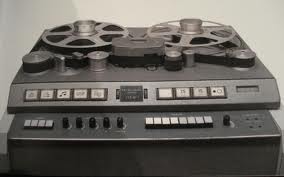 Apparently, this idea didn’t work out as planned so they dropped it, most likely because of some sonic differences appearing when combining recordings done at two different studios. Instead, a reduction mix was created of "take two" (the one originally labeled "final master") in order to free up empty tracks for overdubbing purposes. This resulted in John’s bass performance being combined with the rest of the elements, leaving a performance flub in the third verse which therefore became part of the finished product. To confuse things even more, the engineer labeled this reduction mix as "take three," not to be confused with the incomplete "take three" recorded back at Regent Sound. Still with me? Apparently, this idea didn’t work out as planned so they dropped it, most likely because of some sonic differences appearing when combining recordings done at two different studios. Instead, a reduction mix was created of "take two" (the one originally labeled "final master") in order to free up empty tracks for overdubbing purposes. This resulted in John’s bass performance being combined with the rest of the elements, leaving a performance flub in the third verse which therefore became part of the finished product. To confuse things even more, the engineer labeled this reduction mix as "take three," not to be confused with the incomplete "take three" recorded back at Regent Sound. Still with me?
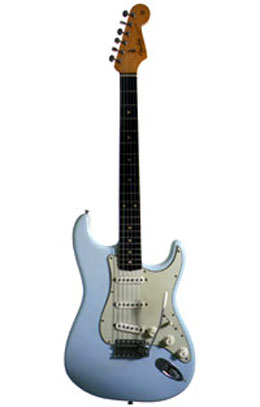 This being finished, they recorded overdubs, which comprised Paul double-tracking his lead vocal in strategic spots, George Harrison adding his lead guitar part and then double-tracking it, George Martin performing an additional harpsichord part, and John and George performing backing vocals. The mono mix was tackled on this day as well with The Beatles present. Five attempts at the mono mix were made (for some reason labeled remixes 2 through 6), an edit of remix 3 and 6 being used for the final product. Ringo’s drums are quite prominent throughout the song while George Harrison’s lead guitar work is somewhat subdued in the mix. In the fade out, Paul is heard singing a high pitched but faintly audible “hey” twice, the second during the lead vocal overdub. This being finished, they recorded overdubs, which comprised Paul double-tracking his lead vocal in strategic spots, George Harrison adding his lead guitar part and then double-tracking it, George Martin performing an additional harpsichord part, and John and George performing backing vocals. The mono mix was tackled on this day as well with The Beatles present. Five attempts at the mono mix were made (for some reason labeled remixes 2 through 6), an edit of remix 3 and 6 being used for the final product. Ringo’s drums are quite prominent throughout the song while George Harrison’s lead guitar work is somewhat subdued in the mix. In the fade out, Paul is heard singing a high pitched but faintly audible “hey” twice, the second during the lead vocal overdub.
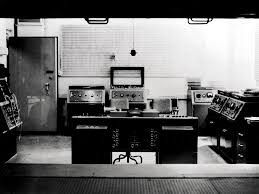 The stereo mix wasn’t created until April 7th, 1967, in the EMI Studio Two control room by the George Martin, Geoff Emerick and Richard Lush team. The rhythm track is predominantly positioned in the left channel while both lead vocals from McCartney are centered in the mix. Both tracks of Harrison’s lead guitar are panned over to the right channel as are the backing vocals of John and George. The drums are a little more subdued than on the mono mix but the lead guitar passages are more prominent. This stereo mix fades a little sooner so as not to include the “hey” exclamations as heard on the mono mix. The stereo mix wasn’t created until April 7th, 1967, in the EMI Studio Two control room by the George Martin, Geoff Emerick and Richard Lush team. The rhythm track is predominantly positioned in the left channel while both lead vocals from McCartney are centered in the mix. Both tracks of Harrison’s lead guitar are panned over to the right channel as are the backing vocals of John and George. The drums are a little more subdued than on the mono mix but the lead guitar passages are more prominent. This stereo mix fades a little sooner so as not to include the “hey” exclamations as heard on the mono mix.
 Sometime during 2016 or 2017, George Martin's son Giles Martin, with engineer Sam Okell, returned to the master tapes of "Fixing A Hole" to create a brand new stereo mix for release on the various editions of the 50th Anniversary of the "Sgt. Pepper" album. Also created during this time were two mixes of the song to be featured as bonus tracks, "take one" and the never-before-heard "take three," both of these being included on some editions of this new release. Sometime during 2016 or 2017, George Martin's son Giles Martin, with engineer Sam Okell, returned to the master tapes of "Fixing A Hole" to create a brand new stereo mix for release on the various editions of the 50th Anniversary of the "Sgt. Pepper" album. Also created during this time were two mixes of the song to be featured as bonus tracks, "take one" and the never-before-heard "take three," both of these being included on some editions of this new release.
Song Structure and Style
 Apparent here is the quite usual structure of ‘verse/ verse/ bridge/ verse/ verse (solo)/ bridge/ verse’ (or aabaaba) with a quick intro and a repeating verse acting as a faded conclusion. However, as usual, The Beatles have some other tricks up their sleeves to make “Fixing A Hole” unique. Apparent here is the quite usual structure of ‘verse/ verse/ bridge/ verse/ verse (solo)/ bridge/ verse’ (or aabaaba) with a quick intro and a repeating verse acting as a faded conclusion. However, as usual, The Beatles have some other tricks up their sleeves to make “Fixing A Hole” unique.
 A distinctive two-and-a-half measure intro begins things with McCartney playing a descending chromatic line (as on the intro to “Lucy In The Sky” two songs prior) on the harpsichord in a staccato-like pattern that gives you the impression that the song that this introduces is in straight 4/4 time. The taps on Ringo’s hi-hat in the final measure says differently, however, as the swing beat (as heard in the previous “Getting Better”) emerges and stays for the remainder of the song. A distinctive two-and-a-half measure intro begins things with McCartney playing a descending chromatic line (as on the intro to “Lucy In The Sky” two songs prior) on the harpsichord in a staccato-like pattern that gives you the impression that the song that this introduces is in straight 4/4 time. The taps on Ringo’s hi-hat in the final measure says differently, however, as the swing beat (as heard in the previous “Getting Better”) emerges and stays for the remainder of the song.
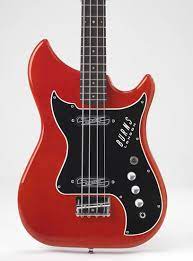 The first eight-measure verse then begins, with Paul’s single-tracked vocal premiering the song’s title while Lennon's bass kicks in with a simple alternating pattern between two notes, as Ringo continues playing the hi-hat pattern while sometimes opening the cymbals slightly. McCartney's harpsichord repeats the descending chromatic line of the introduction in the swing beat this time but then alters it slightly to fill out the verse. Interestingly, the first chord heard in the verse is F major but then it switches immediately into a minor key for the remainder of the verse. The first eight-measure verse then begins, with Paul’s single-tracked vocal premiering the song’s title while Lennon's bass kicks in with a simple alternating pattern between two notes, as Ringo continues playing the hi-hat pattern while sometimes opening the cymbals slightly. McCartney's harpsichord repeats the descending chromatic line of the introduction in the swing beat this time but then alters it slightly to fill out the verse. Interestingly, the first chord heard in the verse is F major but then it switches immediately into a minor key for the remainder of the verse.
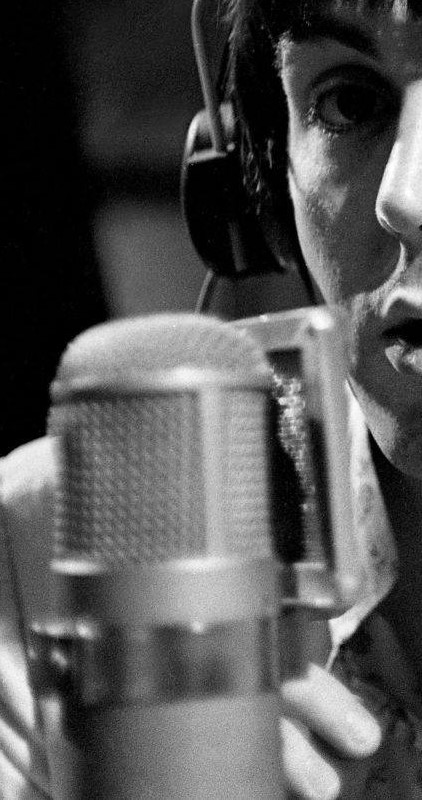 The second half of the verse has many unique characteristics that differentiate it from the first half. John’s bass begins a simple but somewhat syncopated three-note pattern that leaves the downbeat empty, something not usual for a Beatles song. As Paul enters the fifth measure, he begins singing double-tracked on the key line “where it will go,” this lifting his voice into falsetto for the final word which is extended into the sixth measure. George Harrison then comes in for the first time in the seventh and eighth measures with his descending double-tracked guitar phrase. The second half of the verse has many unique characteristics that differentiate it from the first half. John’s bass begins a simple but somewhat syncopated three-note pattern that leaves the downbeat empty, something not usual for a Beatles song. As Paul enters the fifth measure, he begins singing double-tracked on the key line “where it will go,” this lifting his voice into falsetto for the final word which is extended into the sixth measure. George Harrison then comes in for the first time in the seventh and eighth measures with his descending double-tracked guitar phrase.
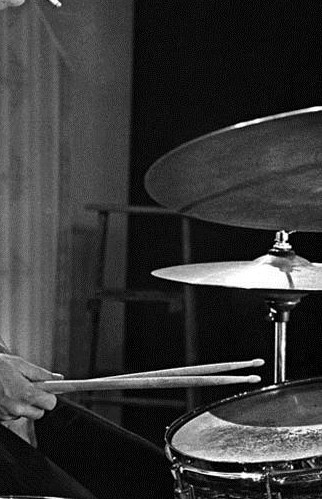 The second verse, which repeats the arrangement above but with minor adjustments, follows next. Ringo plays his full drum kit for the first time at this point, the first four measures alternating his snare beats with two taps on the tom (somewhat like a slow rumba beat) and then playing a more conventional beat for the next three measures. Paul still double-tracks his vocals for the line “where it will go,” but with a slight crack in his voice on the sustained falsetto high note. A "Beatle break" is then instituted for the eighth measure to allow McCartney to begin his vocal line (“and it”) for the bridge that follows. The second verse, which repeats the arrangement above but with minor adjustments, follows next. Ringo plays his full drum kit for the first time at this point, the first four measures alternating his snare beats with two taps on the tom (somewhat like a slow rumba beat) and then playing a more conventional beat for the next three measures. Paul still double-tracks his vocals for the line “where it will go,” but with a slight crack in his voice on the sustained falsetto high note. A "Beatle break" is then instituted for the eighth measure to allow McCartney to begin his vocal line (“and it”) for the bridge that follows.
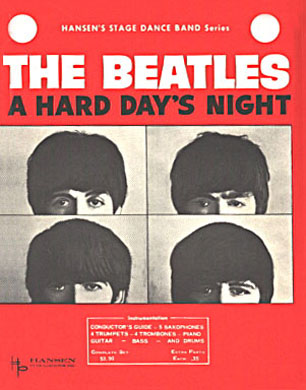 The first eight-measure bridge brings in an optimistic major F key to make it stand out from the verses. This is also quite different from their regular songwriting pattern, the bridges usually altering the key temporarily and then finding a way to transition back into the song’s key when the next verse begins (two such examples being “A Hard Day’s Night” and “Ticket To Ride”). In this case, a switch from minor to major was deemed enough of a difference. The first eight-measure bridge brings in an optimistic major F key to make it stand out from the verses. This is also quite different from their regular songwriting pattern, the bridges usually altering the key temporarily and then finding a way to transition back into the song’s key when the next verse begins (two such examples being “A Hard Day’s Night” and “Ticket To Ride”). In this case, a switch from minor to major was deemed enough of a difference.
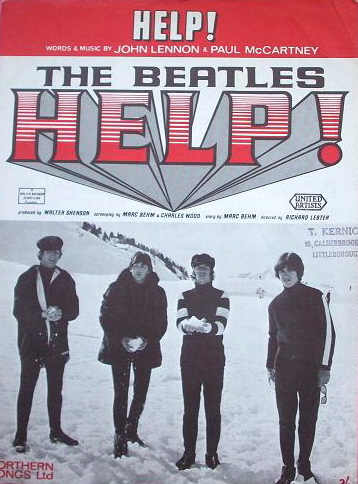 Ringo plays somewhat more vibrantly on his full drum kit for the bridge as John’s bass bounces along effortlessly but simply in an alternating two-note pattern. Simultaneously performed while singing lead vocals during the recording of the rhythm track, McCartney's vocals are double-tracked throughout the bridge, holding a high pitched single note reminiscent of what John was prone to write (see “Help!” and “Girl” for two of many examples). The harpsichord is heard throughout the entire bridge while George Harrison’s lead guitar shows up at the end of the fourth measure which plays a vibrant double-tracked counter-melody to add movement to the song while Paul’s single note melody line is being sung. Ringo plays somewhat more vibrantly on his full drum kit for the bridge as John’s bass bounces along effortlessly but simply in an alternating two-note pattern. Simultaneously performed while singing lead vocals during the recording of the rhythm track, McCartney's vocals are double-tracked throughout the bridge, holding a high pitched single note reminiscent of what John was prone to write (see “Help!” and “Girl” for two of many examples). The harpsichord is heard throughout the entire bridge while George Harrison’s lead guitar shows up at the end of the fourth measure which plays a vibrant double-tracked counter-melody to add movement to the song while Paul’s single note melody line is being sung.
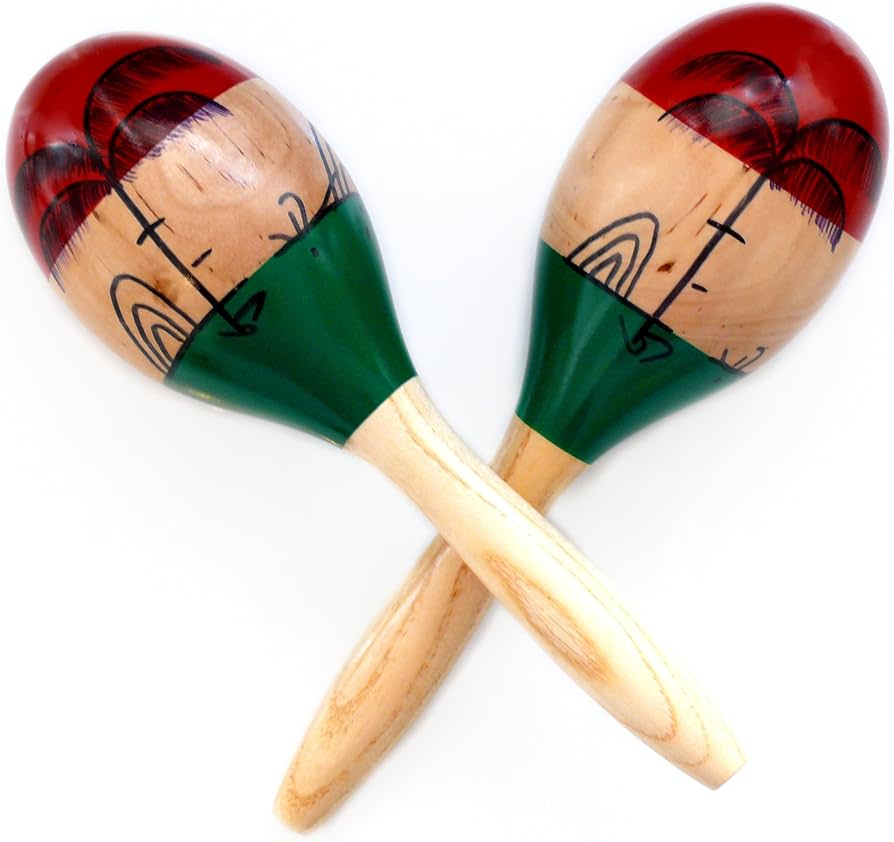 The third verse is identical in arrangement to the second but with more minor subtle changes. This verse shows the first evidence of maracas and Paul adds a nice touch by singing along with George’s descending guitar phrase in the seventh and eighth measure. There is no "Beatle break" at the end of the verse, however, Paul interjecting a double-tracked “heh, heh, hey” to introduce the guitar solo verse that follows. The aforementioned bass flub occurs in the fifth measure where Lennon begins his syncopated three-note run early before catching himself and correcting it in the sixth measure. The third verse is identical in arrangement to the second but with more minor subtle changes. This verse shows the first evidence of maracas and Paul adds a nice touch by singing along with George’s descending guitar phrase in the seventh and eighth measure. There is no "Beatle break" at the end of the verse, however, Paul interjecting a double-tracked “heh, heh, hey” to introduce the guitar solo verse that follows. The aforementioned bass flub occurs in the fifth measure where Lennon begins his syncopated three-note run early before catching himself and correcting it in the sixth measure.
 The guitar solo verse is next with all instruments playing as if it was a regular vocal verse. Paul adds one more double-tracked “hey” on the downbeat of the second measure and then Lennon excitedly begins his syncopated three-note bass run a measure early, beginning it in the fourth measure instead of the fifth. The maracas are in full bloom in the bridge, no doubt inspired by Harrison’s impressive syncopated guitar solo. Ringo even forgot to stop for the planned "Beatle break" in the eighth measure, remnants of hi-hat and snare inadvertently making it onto the released product. No biggie! The guitar solo verse is next with all instruments playing as if it was a regular vocal verse. Paul adds one more double-tracked “hey” on the downbeat of the second measure and then Lennon excitedly begins his syncopated three-note bass run a measure early, beginning it in the fourth measure instead of the fifth. The maracas are in full bloom in the bridge, no doubt inspired by Harrison’s impressive syncopated guitar solo. Ringo even forgot to stop for the planned "Beatle break" in the eighth measure, remnants of hi-hat and snare inadvertently making it onto the released product. No biggie!
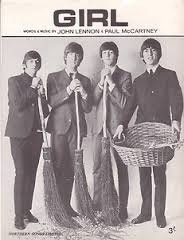 The bridge is now repeated, the most noticeable alteration being the addition of John and George (and Paul?) singing harmonized “ooh”s in the first four measures and “dit, dit” in the last four measures (not the naughty “tit, tit” as heard in “Girl”). The fifth verse is next with different lyrics yet again from all the others, the arrangement differing by the addition of “ooh” harmonies throughout. Paul sings along with George’s ending guitar phrase again to round out the verse. The bridge is now repeated, the most noticeable alteration being the addition of John and George (and Paul?) singing harmonized “ooh”s in the first four measures and “dit, dit” in the last four measures (not the naughty “tit, tit” as heard in “Girl”). The fifth verse is next with different lyrics yet again from all the others, the arrangement differing by the addition of “ooh” harmonies throughout. Paul sings along with George’s ending guitar phrase again to round out the verse.
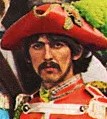 The first verse is then repeated twice as the song fades away, Paul altering the melody line substantially from what he sang earlier, double-tracked all the way. With maracas prominent in the mix through the fade-out, Harrison continues playing his descending guitar phrase throughout all of the measures of the second repeat of the concluding verse, syncopating the phrase in the third and fourth measures in the rhythm track while playing it straight during the double-tracking, creating an interesting back-and-forth effect. The first verse is then repeated twice as the song fades away, Paul altering the melody line substantially from what he sang earlier, double-tracked all the way. With maracas prominent in the mix through the fade-out, Harrison continues playing his descending guitar phrase throughout all of the measures of the second repeat of the concluding verse, syncopating the phrase in the third and fourth measures in the rhythm track while playing it straight during the double-tracking, creating an interesting back-and-forth effect.
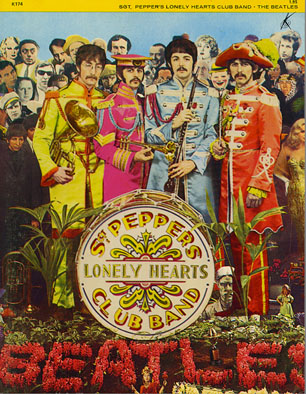 Being mostly a Paul composition (with Mal Evans, that is), he is in control of the proceedings. His lead (and possibly harmony) vocals are done effortlessly as usual, his harpsichord work showing his usual keyboard talents. George Harrison puts in a gallant effort as lead guitarist and harmony vocalist, showing himself up for the task even if his mind was back in India at the time. John's bass work, while not perfect, works nicely in its surroundings, one of the simplest bass patterns on the whole "Sgt. Pepper" album, and putting in some proficient harmonies on the song as well. George Martin wasn’t needed to show too many of his keyboard abilities here, but he held down the arrangement nicely to supplement Paul's keyboard work on the rhythm track. Ringo wasn’t called on to innovate too much here, but he delivered his assignments nicely, readying himself for another game of chess! I wonder if he played a game with Jesus between takes? :-) Being mostly a Paul composition (with Mal Evans, that is), he is in control of the proceedings. His lead (and possibly harmony) vocals are done effortlessly as usual, his harpsichord work showing his usual keyboard talents. George Harrison puts in a gallant effort as lead guitarist and harmony vocalist, showing himself up for the task even if his mind was back in India at the time. John's bass work, while not perfect, works nicely in its surroundings, one of the simplest bass patterns on the whole "Sgt. Pepper" album, and putting in some proficient harmonies on the song as well. George Martin wasn’t needed to show too many of his keyboard abilities here, but he held down the arrangement nicely to supplement Paul's keyboard work on the rhythm track. Ringo wasn’t called on to innovate too much here, but he delivered his assignments nicely, readying himself for another game of chess! I wonder if he played a game with Jesus between takes? :-)
 The lyrical optimism of “Getting Better” takes a slight step backward in “Fixing A Hole” where Paul McCartney shows himself in the process of changing things in his life for the better, hence the lyrical references to “fixing a hole,” “filling the cracks,” “painting the room” and “taking the time.” One thing is for sure, however: he enjoys allowing his mind to “wander” wherever he wants it to (“where it will go”) and he’ll do anything it takes to eliminate whatever gets in the way of that happening. Being “another ode to pot,” as Paul calls the song, I guess that marijuana smoking allowed him the ability to let his mind wander at will, something that straight society would want to discourage him from. The lyrical optimism of “Getting Better” takes a slight step backward in “Fixing A Hole” where Paul McCartney shows himself in the process of changing things in his life for the better, hence the lyrical references to “fixing a hole,” “filling the cracks,” “painting the room” and “taking the time.” One thing is for sure, however: he enjoys allowing his mind to “wander” wherever he wants it to (“where it will go”) and he’ll do anything it takes to eliminate whatever gets in the way of that happening. Being “another ode to pot,” as Paul calls the song, I guess that marijuana smoking allowed him the ability to let his mind wander at will, something that straight society would want to discourage him from.
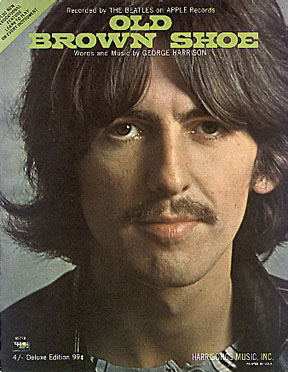 “I like the double meaning of ‘If I’m wrong I’m right where I belong,’” said Paul in his book “Many Years From Now.” The clever juxtaposition of opposite words, such as “wrong” and “right” (used even more prominently by George in “Old Brown Shoe” two years later) is accentuated here in “Fixing A Hole” with the double meaning of the word “right.” We all like it too, Paul. “I like the double meaning of ‘If I’m wrong I’m right where I belong,’” said Paul in his book “Many Years From Now.” The clever juxtaposition of opposite words, such as “wrong” and “right” (used even more prominently by George in “Old Brown Shoe” two years later) is accentuated here in “Fixing A Hole” with the double meaning of the word “right.” We all like it too, Paul.
American Releases
June 2nd, 1967 was the US release date of the album “Sgt. Pepper’s Lonely Hearts Club Band,” which featured “Fixing A Hole” as the fifth song on side one. Its laid-back and dreamy feel follows the sunny “Getting Better” very nicely, creating a contrast that encourages listener interpretation. The album continued to be reissued in the US on vinyl throughout the years.
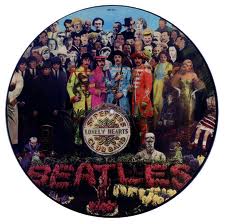 In 1978, Capitol continued the current picture disc trend by releasing “Sgt. Pepper” with its legendary front cover on the a-side and a close-up of the “Pepper” drum head on the b-side. Capitol re-released this picture disc on December 15th, 2017 using the Giles Martin stereo mix and pressing it on 180 Gram vinyl. In 1978, Capitol continued the current picture disc trend by releasing “Sgt. Pepper” with its legendary front cover on the a-side and a close-up of the “Pepper” drum head on the b-side. Capitol re-released this picture disc on December 15th, 2017 using the Giles Martin stereo mix and pressing it on 180 Gram vinyl.
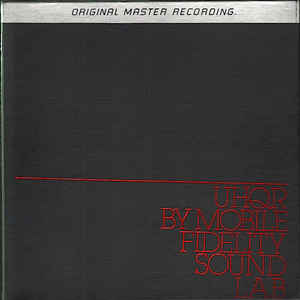 Two interesting American vinyl reissues of the “Sgt. Pepper” album came out as "Original Master Recording" editions produced by Mobile Fidelity Sound Lab. The first edition that was released in September of 1982 (with matrix # UHQR "Ultra High Quality Recording" 1-100) listed for $40 per copy, which was more than five times the cost of the standard version and was limited to 5000 sequentially numbered copies that weighed 200 grams (double the weight of conventional vinyl at that time) and were packaged between layers of protective foam rubber in a thick box. The second edition from Mobile Fidelity Sound Lab was released in June of 1983 and was similar to the rest of the Beatles catalog released within their series. Both were prepared utilizing half-speed mastering technology from the original master tape on loan from EMI. These versions of “Sgt. Pepper” were only available for a short time and are quite collectible today. Two interesting American vinyl reissues of the “Sgt. Pepper” album came out as "Original Master Recording" editions produced by Mobile Fidelity Sound Lab. The first edition that was released in September of 1982 (with matrix # UHQR "Ultra High Quality Recording" 1-100) listed for $40 per copy, which was more than five times the cost of the standard version and was limited to 5000 sequentially numbered copies that weighed 200 grams (double the weight of conventional vinyl at that time) and were packaged between layers of protective foam rubber in a thick box. The second edition from Mobile Fidelity Sound Lab was released in June of 1983 and was similar to the rest of the Beatles catalog released within their series. Both were prepared utilizing half-speed mastering technology from the original master tape on loan from EMI. These versions of “Sgt. Pepper” were only available for a short time and are quite collectible today.
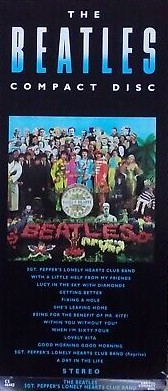 The “Sgt. Pepper” album was released on compact disc for the first time on September 21st, 1987. For those wanting to hear it with the warm vinyl sound they remember in 1967, the CD was remastered and re-released on September 9th, 2009. The “Sgt. Pepper” album was released on compact disc for the first time on September 21st, 1987. For those wanting to hear it with the warm vinyl sound they remember in 1967, the CD was remastered and re-released on September 9th, 2009.
This interesting mono mix of “Fixing A Hole” was finally made available once again, thanks to the remastered set “The Beatles In Mono.” This compact disc box set was also released on September 9th, 2009, the vinyl version eventually coming out as a limited edition release on September 9th, 2014 and then re-released in 2025.
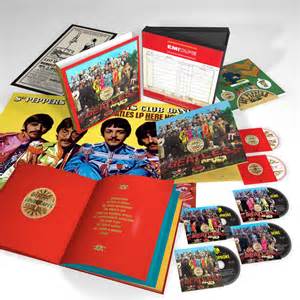 On May 26th, 2017, a newly remixed stereo version of the "Sgt. Pepper" album was released based on the superior 1967 mono mix. A new vibrant stereo mix of "Fixing A Hole" is included in all editions of this re-release. Additionally, the unadulterated 1967 "take one" was included as a bonus track within the "Super Deluxe Edition" set along with the never-before-released "take three," which also appears on the "2 CD Anniversary Edition." On May 26th, 2017, a newly remixed stereo version of the "Sgt. Pepper" album was released based on the superior 1967 mono mix. A new vibrant stereo mix of "Fixing A Hole" is included in all editions of this re-release. Additionally, the unadulterated 1967 "take one" was included as a bonus track within the "Super Deluxe Edition" set along with the never-before-released "take three," which also appears on the "2 CD Anniversary Edition."
Live Performances
The Beatles may never have performed the song in concert, but Paul did periodically include it in his 1993 “New World Tour” set list, the tour stretching from February 18th (Milan) to December 16th (Chile). He then performed a solo piano performance of the song (omitting the guitar solo section) during his “’US’ Tour,” which ran from September 16th (Miami) to November 30th (Los Angeles), 2005.
Conclusion
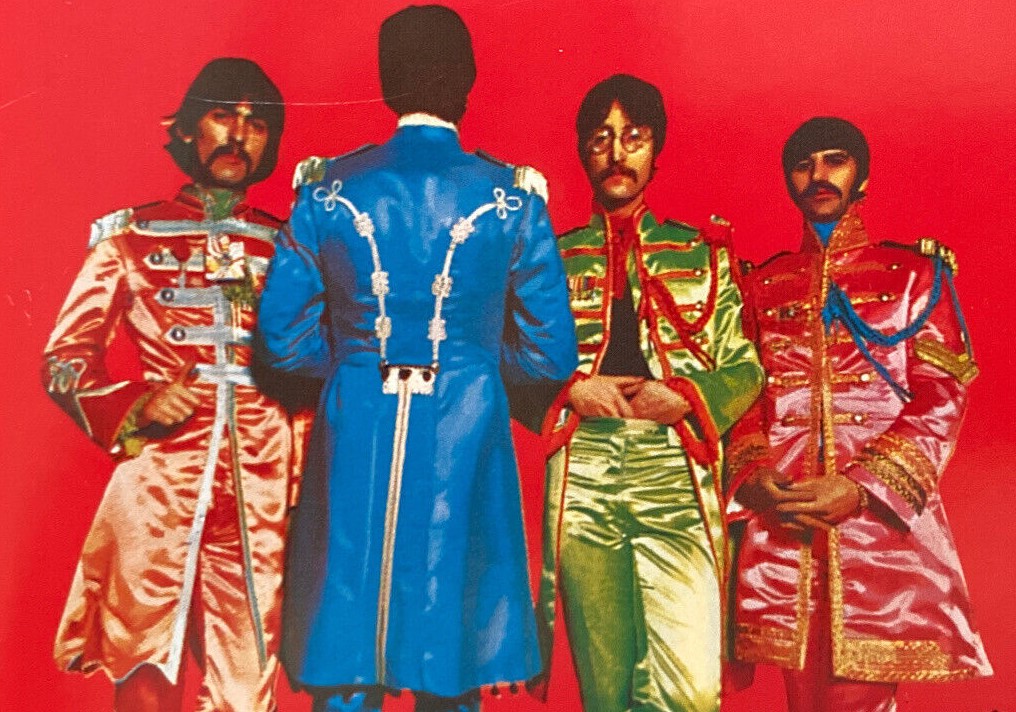 While not making in onto many people’s "Favorite Beatles’ Songs" list, and also not known for getting much radio airplay, it nonetheless stands the test of time as a strong group performance. This excellent song stands amidst an album filled with tracks that have all the "bells and whistles" thrown in, such as Indian instrumentation, raging orchestra swells, a calliope, clarinets, audience applause and laughter, and animal sound effects. “Fixing A Hole” has none of those things. What the song does have, however, is a straightforward pop/rock arrangement using conventional instrumentation, the only eccentric touch being the inclusion of a harpsichord. The result is nothing less than highly imaginative and articulate for its time. While not making in onto many people’s "Favorite Beatles’ Songs" list, and also not known for getting much radio airplay, it nonetheless stands the test of time as a strong group performance. This excellent song stands amidst an album filled with tracks that have all the "bells and whistles" thrown in, such as Indian instrumentation, raging orchestra swells, a calliope, clarinets, audience applause and laughter, and animal sound effects. “Fixing A Hole” has none of those things. What the song does have, however, is a straightforward pop/rock arrangement using conventional instrumentation, the only eccentric touch being the inclusion of a harpsichord. The result is nothing less than highly imaginative and articulate for its time.
Song Summary
“Fixing A Hole”
Written by: John Lennon / Paul McCartney
-
Song Written: January, 1967
-
Song Recorded: February 9 & 21, 1967
-
First US Release Date: June 2, 1967
-
-
US Single Release: n/a
-
Highest Chart Position: n/a
-
-
Length: 2:35 (mono) 2:33 (stereo)
-
Key: F
-
Producer: George Martin
-
Engineers: Adrian Ibbetson, Geoff Emerick, Richard Lush
Instrumentation (most likely):
-
Paul McCartney - Lead Vocals, Harpsichord (unknown)
- George Harrison – Lead Guitar (1961 Sonic Blue Fender Stratocaster), maracas, backing vocals
-
John Lennon - Bass Guitar (1965 Burns Nu-Sonic), backing vocals
-
Ringo Starr – Drums (1964 Ludwig Super Classic Black Oyster Pearl)
-
George Martin - Harpsichord (unknown)
Written and compiled by Dave Rybaczewski
|
IF YOU WOULD LIKE TO MAKE A DONATION TO KEEP THIS WEBSITE UP AND RUNNING, PLEASE CLICK BELOW!
|